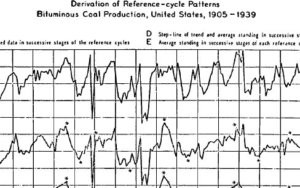At first, I refused to make any connection between these two streams of students’ protest, if only because I wished to stay away from the old “history-never-repeats-itself-or-maybe-in-some-sense-it-does” issue.
Yet, Robin Wells’s post on how economists should handle the public and students’ distrust is reshaping the current debate on econ education in a way that makes a historical comparison worthwhile.
First, here’s the setting.
By the end of the sixties, students’ agitation loomed as large at MIT as on other American campuses. As the Vietnam war escalated, some MIT radical students and faculty hid for several months a drafted student who had gone AWOL. In November 1969, demonstrators invaded the Hermann building where the Center for International Studies was located. Three years earlier, indeed, Senator Wayne Morse had revealed that the CIS was lavishly funded by the CIA, which both students and faculty had repeatedly condemned since. During the following Spring, classes were suspended in the wake of the demonstrations against the Cambodian invasion and the students’ strike. Largely sympathetic to the movement, numerous econ faculty replaced their courses with discussion sessions, and collective letters were sent by Robert Solow to Paul McCracken, chairman of the CEA, on behalf of the faculty, and to the president and the press. The stagflation and the energy crisis soon added to the social troubles, resulting in a direct challenge of the economics undergraduate and graduate curricula. The New Left was on the rise, and in September 1968, radical economists founded the Union for Radical Political Economists, which included numerous MIT students. Within the department, some instructors also began to question the content of the introductory economics courses as well as Samuelson’s Economics, arguing that they didn’t provide an introduction to Marxist economics, and that reading material from Heilbroner, Galbraith, and Baran and Sweezy should be introduced into the curriculum. Students’ letters and petitions were circulated, and numerous faculty-students meetings proved unable to lower tensions. At MIT as elsewhere, students were demanding more “relevance” (I have summarize JB Fleury’s paper on the demand for relevance in the 1970s and its consequences here).
Now, what about Robin Well’s four suggestions?
Provide Context
One of todays’ demands is that students be taught how to apply economics to “real-world issues,” which, it is often argues, entails a greater awareness to the study of institutions, economic history and the history of economic thought.
The 1970s undergraduate students asked for greater “relevance,” that is, for theories and tools better suited to the analysis of burning issues such as the energy crisis, race/sex discrimination and poverty.
What was MIT economists’ response? Here’s what Cary Brown, then head of the economics department, wrote in the 1970 Report to the President:
Often in economics, as in other fields, requests are heard for more relevance in subject matter. As an indication of the desire to improve economic and social ills, such motivation can only be lauded. But a difficulty with economics is its growing complication as it moves toward more precise understanding of complex phenomena. Thorough grounding in the techniques and methods of analysis is necessary to come to grips with these problems and to search for economically viable solutions. Too often the most “obvious” problems require the most recondite understanding. When the demand for relevance represents impatience with mastering techniques and the painstaking search for the facts in all their complexity, easy, superficial “solutions” may be found that are inadequate to, or even exacerbate, the problem. The danger of this kind of “relevance” is that it leads to irrelevance. Undoubtedly, we can improve the quality of pedagogy by motivating students more highly to master theoretical and quantitative techniques, by emphasizing their relevance to particular problems while they are learning, and by never requiring them to take on faith the usefulness of their discipline.
Discussions continued to build up until 1974, when a revision of introductory micro and macro (14.01 and 14.02) was proposed by Peter Temin. Three major changes were proposed:
- It was decided that from 1974 on, “micro will precede macro… so as to introduce economics through problems that are most apparent to the non economist and to the engineer in particular.” Hitherto, MIT students began their undergrad with a macro course, covering notions of scarcity, supply and demand, national income accounting, income determination, unemployment, monetary theory and economic growth. The student then moved on to micro, a course focused on consumer theory, the theory of firms, equilibria, capital theory and micro policies. Both courses were based on Samuelson’s Economics.
- Samuelson’s textbook and reading guide were supplemented by new reading lists, including excerpts from Challenge, The Public Interest, Public Policy, or articles by Kenneth Galbraith. Such material was meant to “improve the students’ understanding of econ concepts by showing him applications and provide factual background.”
- The use of problem sets was generalized. “These problems will provide practice in the use of economics to analyze particular questions,” Temin wrote.
In light of today’s discussions over the reform of the econ curriculum, Temin’s conclusion is ironical. Acknowledging that the aim of introductory courses is “to introduce to the student a new way of looking at some aspects of his environment,” Temin felt that what was needed was to turn away from history:
“the traditional way of accomplishing this end is through the examination of historical ideas…..a different approach is suggested here. Through a sophisticated look at current economic concepts and problems, the student’s appreciation of his surroundings should be enhanced.”
Build trust (“when the instructor compensates for the one-sided nature of the relationship by treating students’ viewpoints with respect”
In the early 1970s, MIT graduate students felt that their relationships with the faculty should be improved. In spite of several students’ testimony that, because of its small size and student-oriented approach, the econ department particularly eased student-student and student-teachers contacts, most graduates complained about the “one-directional flow of information and authority from the teaching to the taught” and “the faculty’s unilateral right to define the scope of our studies.” They felt they were treated as ” an input into a process the goal of which is to maintain the prestige of the MIT economics department and to spread the adoption of its approach to economics,” and bemoaned that “competence is rewarded, not creativity.” They asked that more freedom be given in the choice of majors and minors, that they participate into the definition of the menu of field courses to be chosen from, and that the grading system undergo sweeping changes (the diversity of learning styles should be recognized, independent thinking should be fostered, general examinations should no longer be course specific).
Address Distributional Issues
Graduate students’ only specific curriculum requirement was that an “Income Distribution” course should be established as a field for general examination. Currently digging into the MIT course catalog to see if there was any implementation……
Adopt Some Humility
Of course, I’m not going not make any value judgment on the humility (or lack thereof) displayed by MIT economists in the seventies. At the peak of the graduate protests in 1971, following the students’ demand and Harold Freeman’s proposal, the bi or tri weekly faculty meeting was replaced by a general department meeting with graduate students representing one-third of the total voting membership. I don’t know how long it lasted or if it’s still the case. Nor do I know what the voting process in today US econ department look like (anyone tell me). What clearly emerge from the archives is that this decision was both a symbolic and substantial result of two years of student contestation and monthly reports, suggestions, faculty-students meetings, constant redefinitions of the rules of the conversation. If econ blogs represent the disciplinary improvement many economists say they are, such discussions over economic education should continue to flourish in forthcoming months as they currently are, belying the notion that bloggers are unable to sustain a conversation on a given subject for more than a week.






